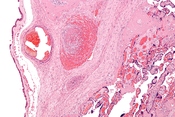Cerebral (Cerebral- Of or relating to the brain or cerebrum) Palsy (Palsy- A weakening or debilitating influence) is a disorder usually caused by brain damage occurring at or before birth and marked by muscular impairment. Often it is accompanied by poor coordination. It sometimes involves speech and learning difficulties. There are no actual problems with the muscles or nerves; it is the damage to the motor portions of the brain which disrupt the control movement and posture.
The signs and symptoms of Cerebral Palsy will often vary from patient to patient. Individuals with cerebral palsy often have difficulties with fine motor tasks, such as writing. They will often experience trouble with maintaining balance and walking. Some patients will also be affected by involuntary movements, such as uncontrollable motions of the hand, and in some cases drooling. These symptoms will often differ from person to person, and may even change over time.
Some cerebral palsy patients will also be affected by other medical disorders, such as mental impairment and seizures.
Cerebral Palsy is not one disorder by itself, but a group of disorders with common problems, but from different causes. When a physician tries to diagnose the cause of cerebral palsy in an individual patient, he/she determines the form of cerebral palsy, the family's medical history, and arrival of the disorder. Approximately 10 to 20 percent of children who are diagnosed with Cerebral Palsy have acquired the disorder after birth. This results from brain damage sustained in the first few months or years of life and can follow brain infections, such as viral encephalitis or bacterial meningitis. It can also result from a head trauma, most often from motor vehicle accidents, falls, or child abuse. Congenital cerebral palsy is present at birth, although it may not be detected and diagnosed for...



Sources?
I found the essay informative but Sources need to be cited to add credability.
0 out of 0 people found this comment useful.